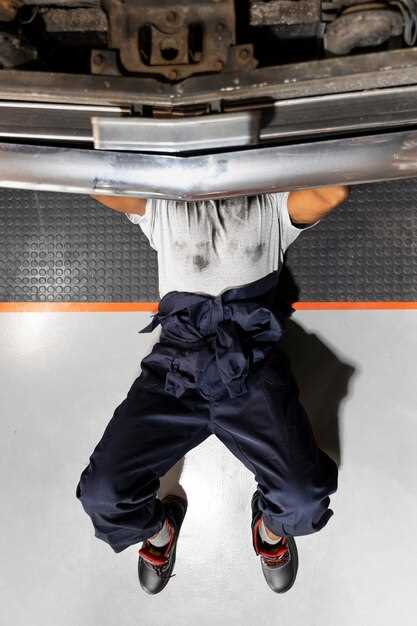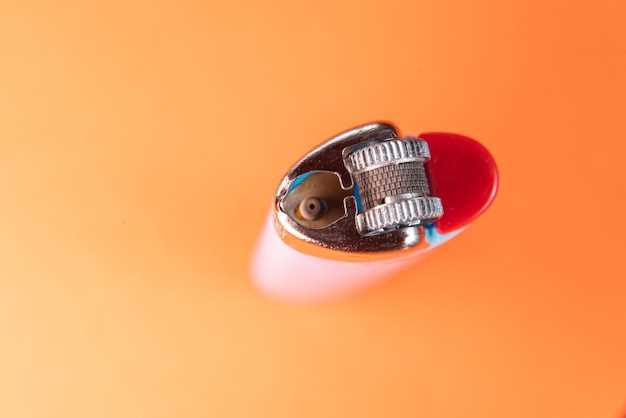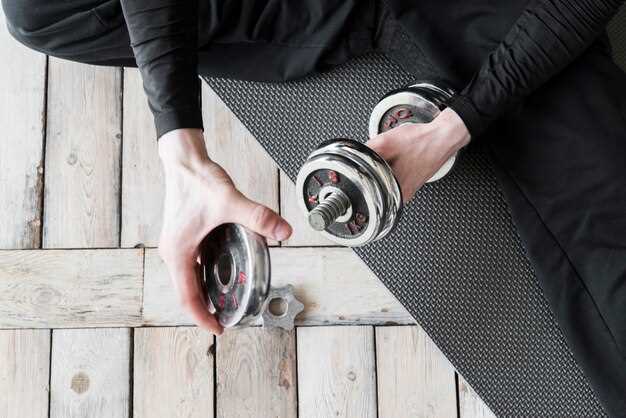
Exhaust wraps, designed to insulate and contain heat, have gained popularity in the automotive world for their performance benefits. The primary function of these wraps is to enhance heat retention within the exhaust system, optimizing engine performance and efficiency. By applying a heat-retaining wrap to exhaust components, enthusiasts aim to reduce under-hood temperatures and improve overall heat management.
While the advantages of using exhaust wraps are often touted, several myths and misconceptions surround their effectiveness. Many believe that wraps can significantly increase horsepower or reduce exhaust gas temperatures to unrealistic levels. It is crucial to distinguish between fact and fiction by thoroughly examining the true benefits and limitations of using these products.
This article delves into the numerous benefits associated with exhaust wraps, including enhanced thermal efficiency and protection against heat-related issues. Additionally, we will address common myths that may influence a decision on whether to use exhaust wraps, providing clarity and insight for automotive enthusiasts and professionals alike.
How Exhaust Wraps Enhance Heat Retention

Exhaust wraps play a crucial role in enhancing heat retention within the exhaust system of vehicles. By applying a thermal wrap around exhaust pipes, the heat generated during combustion is effectively contained. This containment minimizes heat loss to the surrounding environment, allowing the exhaust gases to maintain higher temperatures as they exit the system.
When exhaust gases remain hot, they flow more efficiently, which can result in improved overall engine performance. The heat retention facilitated by the wrap promotes better exhaust scavenging, enhancing the engine’s ability to draw in fresh air for combustion. This process optimizes fuel efficiency and can lead to increased horsepower and torque.
Moreover, maintaining higher temperatures in the exhaust system reduces the likelihood of condensation forming inside the pipes. This is significant as condensation can lead to corrosion over time, potentially compromising the integrity of the exhaust system. By preventing this moisture buildup, exhaust wraps contribute to a longer lifespan for exhaust components.
In addition to performance benefits, heat retention achieved through exhaust wrapping can significantly improve the comfort level inside the vehicle. With less heat radiating from the exhaust system to other engine components and the cabin, the overall temperature management within the engine bay becomes more efficient. This results in a cooler environment, which can impact other parts positively, leading to enhanced reliability and decreased wear.
Common Misconceptions About Exhaust Wrap Durability
One of the prevalent myths surrounding exhaust wraps is the belief that they deteriorate quickly under high temperatures. In reality, high-quality exhaust wraps are engineered to withstand extreme heat, often exceeding 1200°F (649°C). This durability is crucial for effective heat retention and protection of nearby components.
Another common misconception is that exhaust wraps can shorten the lifespan of the exhaust system. In contrast, they are designed to protect the exhaust pipes from corrosion and thermal breakdown. By keeping the heat within the exhaust system, wraps actually reduce the risk of damage caused by thermal fatigue.
Some users worry that the exhaust wraps will fray or lose their integrity over time. While it’s true that some lower-quality wraps may experience wear, premium exhaust wraps are resistant to abrasion and designed for long-term use. Proper installation and maintenance can further enhance their longevity.
Additionally, many believe that wrapping an exhaust will lead to moisture retention, causing rust. In fact, a well-installed exhaust wrap minimizes moisture accumulation by promoting faster evaporation due to the elevated temperatures. This characteristic helps maintain the exhaust system’s integrity.
Ultimately, it’s essential to understand that the right exhaust wrap can offer significant benefits without compromising durability. Misinformation can lead to hesitation in using these products, but awareness of their true performance capabilities highlights their role in enhancing both efficiency and longevity of exhaust systems.
Impact of Exhaust Wraps on Engine Performance
Exhaust wraps are a popular modification among automotive enthusiasts, designed to improve both performance and aesthetics. By wrapping the exhaust system, typically the headers and pipes, these products aim to achieve heat retention, which can have several effects on engine performance.
One of the primary benefits of using exhaust wraps is the retention of heat within the exhaust system. When heat is retained, it allows exhaust gases to exit the engine more efficiently. This can result in a reduction of backpressure, which is beneficial for turbocharged and naturally aspirated engines alike. Improved exhaust flow can lead to enhanced throttle response and an increase in horsepower.
Additionally, maintaining higher exhaust gas temperatures can improve the efficiency of turbochargers. A hot exhaust gas stream can increase turbo spool time, resulting in more immediate power delivery when needed. This can significantly enhance overall vehicle performance, particularly in racing or high-performance applications.
However, it is important to note that not all exhaust wraps are created equal. Quality materials and proper installation are crucial for maximizing the benefits of heat retention. Inferior wraps can deteriorate over time, potentially leading to issues with rust and corrosion on the exhaust components that are supposed to be protected.
Moreover, while exhaust wraps can offer performance enhancements, they may also lead to increased stress on engine components due to the elevated temperatures. Factors such as engine tuning and the specific use of the vehicle should be considered when deciding whether to install exhaust wraps.
| Benefit | Impact on Performance |
|---|---|
| Heat Retention | Improved exhaust flow and reduced backpressure |
| Enhanced Turbo Response | Faster turbo spool time |
| Potential Component Stress | Increased risk of wear and damage |
In summary, while exhaust wraps can significantly enhance engine performance through heat retention, care must be taken to choose quality products and consider the specific engine dynamics. Proper implementation can yield impressive results but requires an understanding of the associated risks.
Installation Tips for Optimal Exhaust Wrap Usage
Applying exhaust wrap can significantly improve heat management and performance in your vehicle. Here are essential tips to ensure effective installation:
-
Choose the Right Material:
Select high-quality exhaust wrap made from materials like fiberglass or titanium. These options are designed to withstand high temperatures and provide excellent heat retention.
-
Clean the Exhaust Surface:
Before applying the wrap, thoroughly clean the exhaust pipes. Remove any dirt, grease, or old exhaust coatings to ensure maximum adhesion and effectiveness of the wrap.
-
Measure and Cut:
Measure the length of the exhaust pipe you wish to cover. Cut the wrap to the appropriate length, allowing for some overlap, typically around 1 to 2 inches.
-
Start from One End:
Begin wrapping at one end of the exhaust pipe. Secure the end with a zip tie or a metal strap to prevent slippage during installation.
-
Overlap Each Layer:
Wrap the exhaust with at least a half-inch overlap. This ensures that no gaps are left for heat to escape, thereby maximizing heat retention.
-
Tighten as You Wrap:
Keep the wrap tight as you go to prevent any loose sections. This promotes an even layer that enhances heat management.
-
Secure the Ends:
After reaching the desired length, secure the end of the wrap with additional zip ties or stainless steel clamps. This prevents unraveling and ensures durability.
-
Allow for Drying Time:
If using any adhesives along with the wrap, ensure to allow adequate drying time before starting the engine. This will secure the wrap in place effectively.
-
Inspect Regularly:
After installation, regularly inspect the wrap for wear and tear. Promptly address any damage to maintain optimal heat regulation.
Following these installation tips will help you maximize the benefits of your exhaust wrap, ensuring better heat control and overall performance.
Maintenance Recommendations for Long-lasting Exhaust Wraps
To ensure the longevity of your exhaust wraps, it is essential to follow proper maintenance practices. Regular inspection of the wrap should be a priority. Look for signs of wear, fraying, or discoloration that may indicate degradation. If any damage is detected, consider replacing the affected sections promptly to maintain optimal performance.
Cleansing the exhaust wrap is another crucial aspect for retention and longevity. Use a mild detergent and warm water to gently clean the wrap, removing any built-up dirt, oil, or debris. Avoid harsh chemicals that can compromise the material integrity of the wrap.
During vehicle maintenance, always check the exhaust system for leaks. A leak can lead to increased temperatures, which may negatively impact the exhaust wrap’s effectiveness. Address any issues immediately to preserve the wrap’s function and lifespan.
Additionally, when installing or re-installing exhaust wraps, use high-quality stainless steel ties or clamps to secure them tightly. This will help prevent the wrap from sagging or coming loose over time, ensuring better heat retention and performance.
Finally, consider the conditions in which your vehicle operates. Regular exposure to extreme weather or excessive moisture can affect the durability of the exhaust wrap. In such environments, additional protective measures may be warranted to extend its lifespan. Keeping these recommendations in mind will help you maintain effective heat retention and enhance the overall performance of your exhaust system.
Comparing Exhaust Wraps with Other Heat Management Solutions

When it comes to heat management in automotive systems, many enthusiasts and professionals are considering various solutions to optimize performance. Exhaust wraps are an increasingly popular choice due to their unique properties in heat retention and protection. However, it is essential to compare them with other alternatives to understand their advantages and disadvantages.
Exhaust wraps are designed specifically to wrap around exhaust pipes, thus promoting heat retention within the system. This helps to maintain higher exhaust gas temperatures, facilitating improved exhaust flow and enhancing overall engine efficiency. The wrapping process can also reduce heat radiation, protecting surrounding components from excessive temperatures.
In contrast, heat shields offer a different form of protection. They are typically made of metal or composite materials and act as barriers to redirect heat away from sensitive areas. While heat shields can effectively shield components, they do not provide the same level of heat retention as wraps. Therefore, they may not contribute as significantly to improving exhaust gas velocity.
Thermal barriers, another common solution, involve coatings that provide insulation without the need for physical covers. Although these coatings can effectively reduce heat transfer, they can be less durable than wraps. Additionally, they may not withstand the same high temperatures typically experienced in racing or high-performance applications.
Furthermore, ceramic coatings are another option, offering exceptional heat management properties. These coatings can withstand extreme temperatures and are excellent for reducing thermal radiation. However, the application process is more complicated and can be cost-prohibitive compared to the simplicity and affordability of exhaust wraps.
In summary, while exhaust wraps provide effective heat retention and protection for exhaust components, alternatives like heat shields, thermal barriers, and ceramic coatings each have their advantages. The choice often depends on the specific requirements of the application, desired performance benefits, and budget considerations. Exhaust wraps stand out as a versatile solution, particularly for those seeking enhanced exhaust flow and component protection in high-performance settings.
